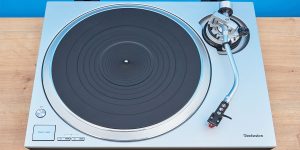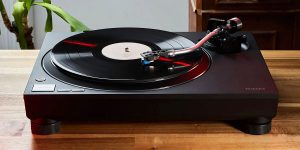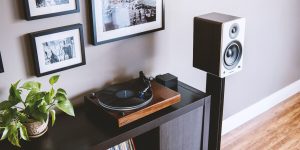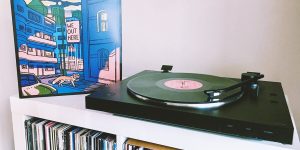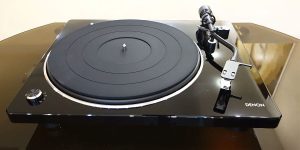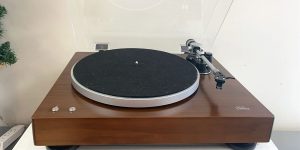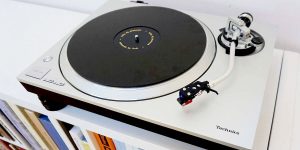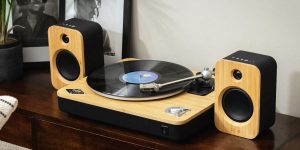So, you are a happy owner of a turntable, and you are ready to improve the sound quality of your audio system. The fastest and easiest way to do this is to connect record player to soundbar. Some people encounter difficulties at this stage, so here I’ll look at the basic ways to connect depending on the type of device you have. Let’s go!
Ways to connect the soundbar to the vinyl player
Record player with built-in preamp + soundbar
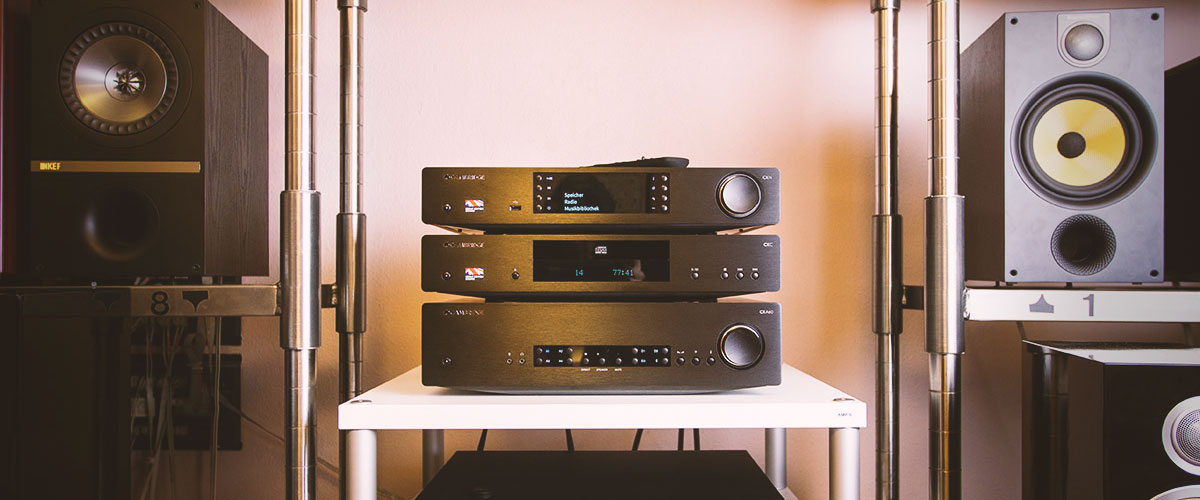
You do not need to be a qualified engineer to hook up a record player to a soundbar. You can connect the turntable with the built-in phono connector to any soundbar input labeled AUX (most often), or another name such as LINE, Audio, using an audio cable/RCA cable.
Let’s get started:
- There’s definitely a switch labeled PHONO/LINE somewhere on your turntable. Did you find it? All you have to do is switch it to LINE mode.
- On the soundbar, find the input labeled PHONO.
- Connect the AUX/RCA cable from the player to the input labeled LINE on the soundbar.
- Your soundbar should have a “select turntable device” option. Select it. Done!
Vinyl player with separate preamp + soundbar

Nothing complicated awaits you with this type of connection. The process is almost identical to the previous method:
- You just have to connect the turntable’s audio cables to a separate phono preamp first, not to the soundbar. Check if you have any extra wires; they should also be connected.
- After that, connect the audio cables from the phono amplifier to the analog inputs of the soundbar (look for the Audio, AUX, and LINE markings).
- Now power up the phono preamp and enjoy!
Since external phono amplifiers usually have better circuitry, many vinyl turntable owners purchase them in addition to the built-in ones. In such a situation, to avoid making the sound worse because both phono preamps will try to amplify the same signal, I would advise connecting them to the AUX input and not to the receiver’s input.
Bluetooth record player + soundbar
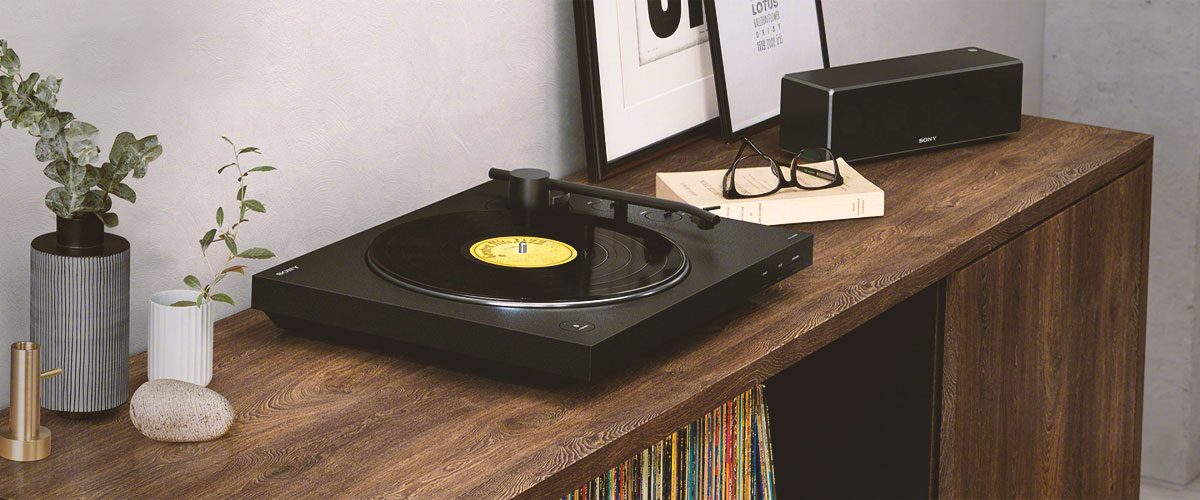
Of course, I can’t help but dwell on such a function as Bluetooth because most modern audio systems have it. In this case, it’s also quite simple. But I would like to point out right away that any wireless technology requires audio compression, which can lead to loss of musical detail or add unwanted noise to the signal. Therefore, if you want to get the best possible sound from the player, Bluetooth may not be the best option, a fully analog connection will be required here.
At the same time, if you don’t want to get tangled in dusty wires forever, if you need to use the soundbar outside, for example, or if your soundbar simply does not provide other connection methods, this method is for you.
Since the exact process of connecting the turntable to the soundbar may vary slightly depending on the device, I would recommend that you first turn on both devices and pair them, following the instructions in the manual at the same time.
How do I connect the soundbar if it has no RCA or AUX input?
You may find yourself in a situation where your soundbar does not have an AUX port or RCA inputs, while vinyl players come with them. So what should you do in this situation? First of all, don’t despair; there is a decent way out of this situation.
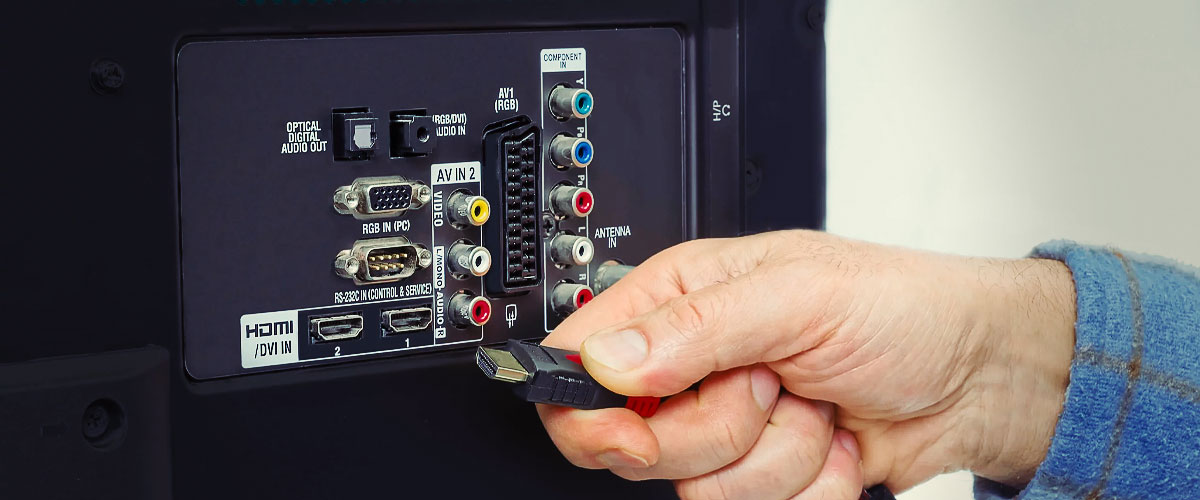
In this case, I use an HDMI cable to connect the soundbar to the TV set because this method is considered one of the best for connecting between them. After all, HDMI cables can transmit large amounts of uncompressed digital audio information. Accordingly, I connect the record player to the TV using the RCA or AUX port.
And, even though vinyl connoisseurs certainly do not recommend doing so, as a result, you can assemble yourself a 2.1, 5.1, or 7.1 system. That sounds like a great way out to me. Go for it!
We are supported by our audience. When you purchase through links on our site, we may earn an affiliate commission at no extra cost to you.
Our newsletter
* We will never send you spam or share your email with third parties


